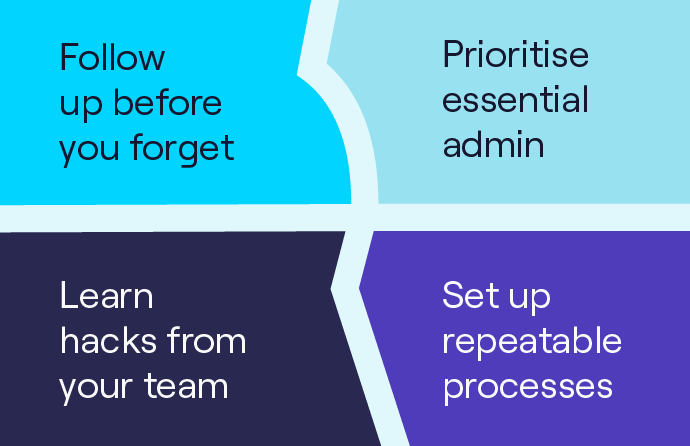What is Lead Conversion Rate and How Do You Calculate It?
Businesses rely on a steady flow of customers to sustain their operations. Lead conversion rate is a critical metric that helps companies track their success in turning potential customers into paying customers.
In this article, we will explore what lead conversion rate is, how to calculate it, and the factors that affect it.
Scroll 👇 for more.
Definition of lead conversion rate
Lead conversion rate is the percentage of leads that have been successfully converted into paying customers.
It’s a critical metric for businesses because it helps them understand the effectiveness of their efforts in converting leads into customers.
A high lead conversion rate indicates that a business successfully converted a significant percentage of its leads into customers, which can lead to increased revenue and growth.
Conversely, a low lead conversion rate suggests there may be issues with the company’s B2B sales and marketing processes.
Definition of a lead
A lead is a potential customer who has shown interest in a company's products or services by providing their contact information, such as name, email address, or phone number.
These leads may have been generated through various marketing channels, including email marketing, SMS marketing, influencer marketing, social media advertising, search engine optimisation, or paid search advertising.
Definition of conversion
Conversion happens when a lead takes a desired action that brings them closer to becoming a paying customer.
This could be anything from filling out a contact form, requesting a demo, or making a purchase. Once a lead converts into a customer, they become a source of revenue for the company.
How to calculate lead conversion rate
Lead conversion rate is calculated by dividing the number of leads that have converted into paying customers by the total number of leads generated within a specific period.
Here is a step-by-step guide to calculating your lead conversion rate:
1. Determine the time period you want to measure
This could be a day, week, month, or any other specific time frame that makes sense for your business.
2. Count the total number of leads generated during the time period
A lead is any person who has shown interest in your product or service by providing their contact information, such as their name, email address, or phone number.
3. Count the number of leads that have converted into paying customers during the same time period
A conversion is any desired action that brings a lead closer to becoming a paying customer, such as buying a product, scheduling a consultation, or signing up for a free trial.
4. Divide the number of converted leads by the total number of leads generated
Multiply the result by 100 to get the lead conversion rate as a percentage.
Here is the formula for calculating lead conversion rate:
Lead Conversion Rate = (Number of Leads Converted / Total Number of Leads) x 100
This is an example:
If a business generated 500 leads in a month and 50 of those leads became paying customers, the lead conversion rate would be:
Lead Conversion Rate = (50 / 500) x 100 = 10%
The importance of lead conversion rate for businesses
Here are some reasons why lead conversion rate is essential for businesses:
It determines the effectiveness of marketing and sales efforts
A high lead conversion rate indicates that a company's marketing and sales efforts are effective in generating revenue.
On the other hand, a low conversion rate suggests that there may be issues with your marketing and sales processes.
It maximises return on investment (ROI)
Measuring lead conversion rate helps businesses identify the B2B marketing and sales channels that generate the most revenue.
By focusing on the most successful channels, businesses can allocate their resources and marketing budgets more effectively, thereby maximising their ROI.
It improves customer acquisition cost (CAC)
A high lead conversion rate can help businesses reduce their customer acquisition costs.
When a higher percentage of leads convert into paying customers, the cost of acquiring each customer is reduced, making the business more profitable.
It provides insights for optimisation
Measuring lead conversion rate gives businesses insights into optimising their marketing and sales processes.
By identifying the factors that affect conversion rates, businesses can make data-driven decisions to revamp their playbooks.
It sets realistic goals
Benchmarking lead conversion rates against industry standards can help businesses set realistic goals and expectations.
This enables them to create achievable targets and develop strategies to improve their lead conversion rates over time.
Challenges in calculating lead conversion rate
Businesses can face several challenges in accurately calculating lead conversion rate.
These challenges include:
Defining what constitutes a lead
Different businesses have different criteria for what constitutes a lead. For example:
One business may define a lead as someone who has filled out a contact form, while another may define it as someone who has downloaded a whitepaper.
This inconsistency in defining a lead can make it difficult to calculate lead conversion rates accurately.
Defining what constitutes a conversion
Similarly to defining a lead, different businesses may have different criteria for what constitutes a conversion.
For example:
One business may consider a conversion as a sale, while another may consider it as someone who has signed up for a free trial.
This inconsistency in defining a conversion can make comparing lead conversion rates across different businesses challenging.
Defining attribution
Determining which marketing channels or campaigns are responsible for generating leads and conversions can be challenging.
For example:
If a lead interacts with a business through multiple channels before converting, it can be difficult to determine which channel or campaign should be credited with the conversion.
Factors affecting lead conversion rate
Now, let’s take a closer look at what can affect your lead conversion rate.
Website design and user experience
Website design plays a significant role in lead conversion rate. When a visitor comes to your website, they expect to find what they’re looking for quickly and easily.
How a website is designed can encourage or discourage visitors from taking the desired conversion action.
A poorly-designed website with a confusing user experience can lead to frustration and confusion, causing visitors to leave your website without converting into a lead.
A website that is visually appealing, easy to read, and has clear calls to action can make a big difference in your lead conversion rate.
This especially applies to landing pages.
The key takeaway:
Visitors are more likely to take action when they feel comfortable and confident on your website. A website that looks outdated, cluttered, or hard to navigate can turn visitors off and cause them to leave your website without converting.
Quality and relevance of content
Visitors come to your website looking for information or solutions to their problems. If your content is of poor quality or irrelevant to their needs, they will likely leave your website without taking action.
High-quality, well-written, informative, and engaging content can establish your brand as an authority in your industry.
Consider hiring a Head of Growth who specialises in copywriting and content writing to help you achieve this goal. They will assist you in creating compelling content that is SEO and conversion optimised, building trust with your visitors, and converting them into leads.
Quality content that provides value to your visitors can also encourage them to share your content, driving more traffic to your website and increasing your chances of generating more leads.
Relevance is equally important. Your content must be relevant to your target audience and address their pain points or needs.
When visitors land on your website and find content that speaks directly to their needs, they’re more likely to engage with your brand and take the desired action.
However, if your content is irrelevant to their needs, they will likely leave your website and look for solutions elsewhere.
Lead source and quality
Lead source and quality are critical factors that can impact your lead conversion rate.
The source of your leads can affect how likely they are to convert into paying customers.
For example:
If you receive leads from a reputable source, such as a trusted referral partner or a well-known industry publication, those leads will likely be of higher quality and more likely to convert.
However, if your leads come from a source that is not well-vetted or unqualified, your lead conversion rate may suffer.
Low-quality leads can waste time and resources as your sales team attempts to convert them into paying customers. It's important to carefully evaluate the quality of your B2B leads and prioritise those that are most likely to convert.
Additionally, the quality of your leads can also affect your lead conversion rate. Not all leads are created equal; some will be more qualified than others.
A lead that has expressed a strong interest in your product or service and has provided detailed contact information is more likely to convert than a lead that has only filled out a basic contact form with minimal information.
To improve your lead conversion rate, it's essential to focus on generating high-quality leads from reputable sources.
This may involve working closely with trusted partners or investing in targeted advertising campaigns to reach your ideal customers.
By focusing on lead quality rather than quantity, you can improve your chances of converting more leads into paying customers and ultimately grow your business.
Sales and follow-up process
Even if you generate high-quality leads, if you don't have an effective sales and email marketing follow-up process, you may struggle to convert those leads into paying customers.
First, it's important to have a streamlined sales process that makes it easy for your leads to convert.
This may involve:
- Providing clear information about your products or services.
- Offering a simple and easy-to-understand pricing structure.
- Providing a clear call-to-action that encourages your leads to take the next step.
Additionally, follow-up is key to converting leads into customers.
Many leads may not convert on the first interaction; a follow-up process will help to nurture those leads until they’re ready to convert.
This may involve sending personalised emails, making sales calls, or providing additional information or resources that can help move the lead closer to a purchase decision.
The quality of your follow-up is also important.
Prompt, personalised, and helpful follow-up can help build trust and establish your brand as a reliable and trustworthy partner.
On the other hand, slow, impersonal, or pushy follow-up can turn leads off and cause them to look elsewhere for solutions.
The key takeaway:
Have a streamlined sales process that makes it easy for your leads to convert, as well as a high-quality follow-up process that helps nurture those leads over time.
By providing helpful, personalised, and timely follow-up, you can build trust with your leads, establish your brand as a reliable partner, and increase your chances of converting more leads into paying customers.
Pricing and offers
When potential customers consider purchasing your product or service, they’re likely to compare your pricing and offers with your competitors.
If your pricing is too high or your offers are not competitive, you may struggle to convert those leads into paying customers.
One way to improve your lead conversion rate is to offer competitive pricing and compelling offers that set your brand apart from your rivals.
This may involve offering discounts, consumer promotions, or bundles that provide added value to your potential customers. Offering a better value proposition than your competitors makes it more attractive for leads to choose your brand.
It's also important to be transparent about your pricing and offers. Confusing or hidden fees can cause leads to lose trust in your brand and look elsewhere for solutions.
Another factor to consider is the perceived value of your product or service. Even if your pricing is competitive, if your potential customers don't perceive your product or service as valuable, they may be less likely to convert.
To improve the perceived value of your offering:
Clearly communicate the benefits of your product or service and how it can help solve your potential customers' problems or meet their needs.
Competition and industry standards
When potential customers consider purchasing your product or service, they are likely to compare your brand with your competitors.
If your brand isn’t competitive in terms of quality, pricing, or other factors, you may struggle to convert those leads into paying customers.
It's essential to understand your competition and the industry standards in order to identify areas where you can improve and differentiate your brand.
This may involve:
- Conducting market research.
- Analysing competitor offerings.
- Understanding the needs and preferences of your potential customers.
Additionally, keeping on top of industry standards and trends will help you stay competitive and offer cutting-edge solutions that meet the changing needs of your customers.
Lead conversion rate: key takeaways
- Lead conversion rate is a crucial metric for businesses that want to measure the effectiveness of their marketing and sales efforts.
- By tracking your lead conversion rate, you can identify areas where you can improve your marketing and sales processes, as well as better understand the needs and preferences of your potential customers.
- To optimise your lead conversion rate, it's important to consider a variety of factors that can impact the customer journey, such as website design, user experience, content quality, lead source and quality, sales and follow-up processes, pricing and offers, and competition and industry standards.
- By taking a holistic approach to measuring and improving your lead conversion rate, you can increase your chances of converting more leads into paying customers and achieving long-term business success.



